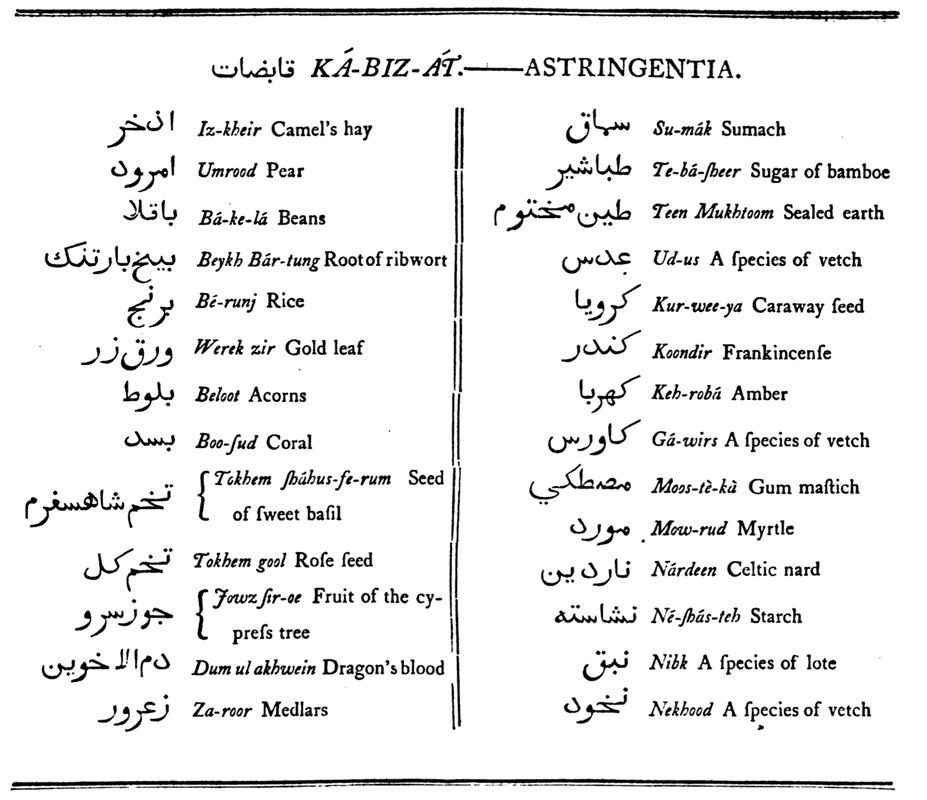2O. Astringents
Binding Materia Medica in Arabic & Persian, Shirazy, 1793
Materia Medica in Arabic & Persian, Shirazy, 1793These medicines were traditionally also classed as Incrassating (thickening), Repellent (repelling) or Adstringent (binding).
Astringent medicines are drying, usually in the 3rd or 4th degree. They thicken Humors and Fluids, and therefore hinder leakage. They also tighten lax tissues.
They are used for Diarrhea, Dysentery, Leukorrhea, Spermatorrhea; some restrain Sweat and Excessive Urination. Some have a secondary tonic action and help stop loss of Essence. Some are also Hemostatic, or hinder Miscarriage.
They are known by their astringent and contracting effect on the tongue when they are tasted.
They are opposed to Loosening, Lenitive and Opening medicines.
Compare with the TCM classification of R. Astringents
Addendum:
Anhydrotics–Medicines that Stop Sweating
|
Sage Agaric Datura seed Belladonna root |
Walnut leaf Ergot Henbane seed Nux Vomica prepared |
Others:
Jaborandi
Externally: rub oil over the body; wash the body with Vinegar; Starch as a dusting powder
Western Classification
